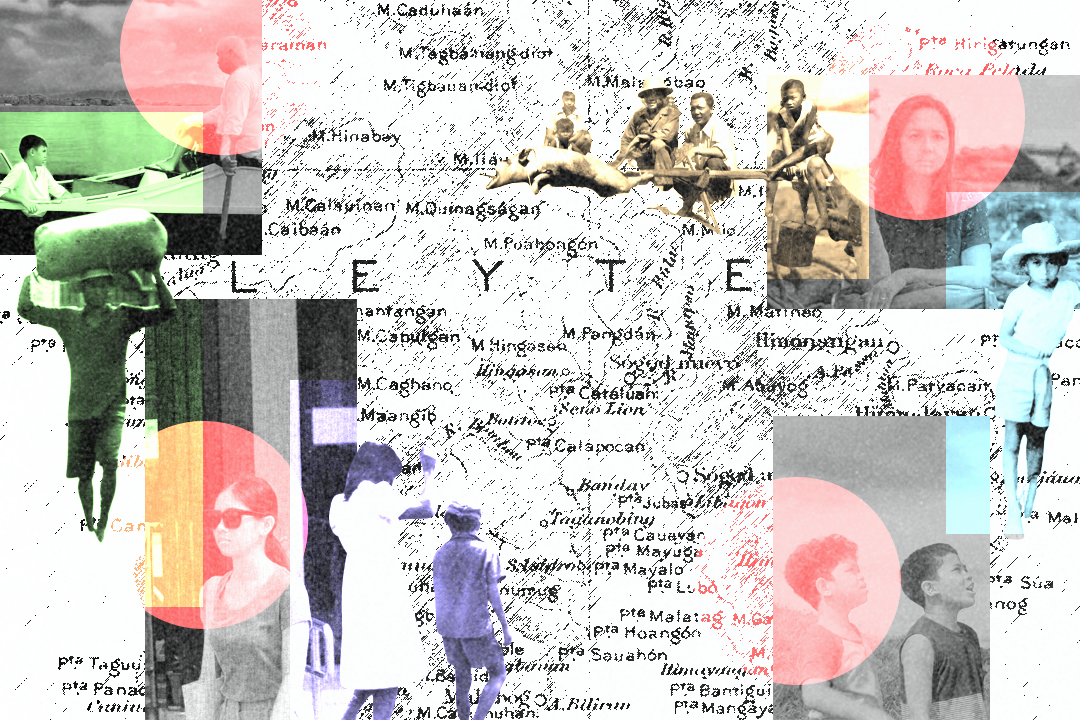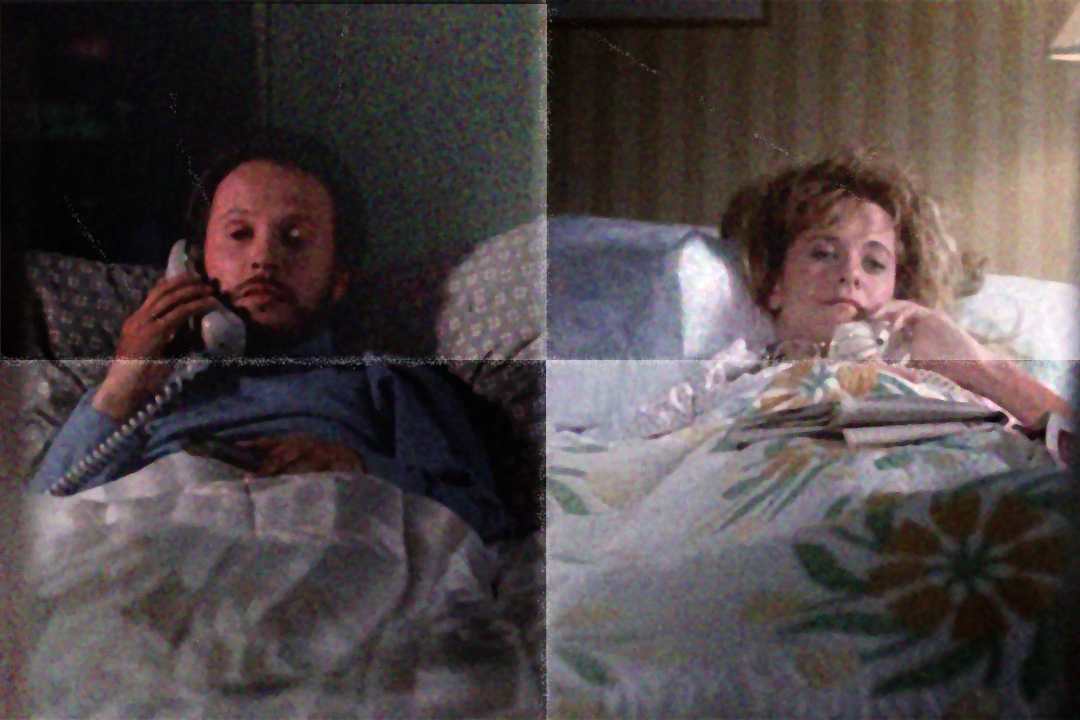Asa Ang Mga Salida sa Leyte? (Where Are All the Films in Leyte?)
Asa Ang Mga Salida sa Leyte (Where Are All the Films in Leyte?)
Feature art by Mark Dela Cruz
I remember the first local film festival I attended.
It was in August of last year. I brought a friend along with me to the bustling streets of Cebu City, just in time for the physical comeback of the 14th edition of BINISAYA Film Festival. My goal was to cover the fest for SINEGANG.ph by writing a feature and shooting a Tapsilog video with the filmmakers in attendance. Since it was the closest local film event I could attend (only a six-hour boat ride away from my province), I volunteered with no hesitation.
When you’re part of a local film collective where most of its members have easy access to film events like this one, and you constantly feel left out–especially since you’re one of the few that’s not from these film-centric places–you’ve got to do what you can to expose yourself to the film scenes from other regions so you can at least contribute to the publication. Good thing the travel fare from Leyte to Cebu was cheap for an employed individual like me, so all is good!
Keith Deligero in a sea of lights inside the theater. Photo taken from BINISAYA.
Just being there in person already meant something for my cinephilia. As I watched all the competing short films on the big screen, I knew right then that this was an exciting moment that would forever be in my core memory.
“Our voices, as both audience members and filmmakers, are important—especially when we express our feelings through the technology we currently have. If we do this together, we will be heard, even if we are in the dark,” Keith Deligero, the film festival’s founder, said during awards night and encouraged everyone to turn on their phone’s flashlight inside the dimly lit theater.
“No matter how small we are in this world, if we express our feelings and support each other as minorities, we will eventually be heard, someday and somehow,” he added.
Each light, though small, when combined, shone brightly enough to light up the theater–or figuratively, the world–allowing you to see the people around you and for them to see you too: your individuality, your soul, and your stories. This is what cinema is all about.
A few snapshots of the author's film festival experiences
As of writing, there are only four local film festivals I’ve attended aside from BINISAYA: the 2024 Active Vista Human Rights Film Festival in Sine Pop, Cubao, Quezon City (where I just happened to be because I had a meeting with some film producers at that same venue); the 2024 Ngilngig Asian Fantastic Film Festival in Davao City (where my short film, which I wrote, directed, and produced, was in competition); and the 13th Sinedisipulo in Cebu City (where the student short film I produced was in competition). Each of these festivals is so distinctly unique and represents the kind of communal experience I had longed for. I’m so happy I got to be there and be a part of them.
But the post-party blues hit me like a ton of bricks. It’s very bittersweet that everytime I go back to my hometown in Leyte, mixed emotions flood over me. There’s a part of me that wants to return to those places because being surrounded by an enthusiastic film community made me so happy just thinking about it. However, there’s also this recurring feeling of jealousy that I have towards their film scene. It’s so alive…
…and here I am, stuck in Leyte, wondering: where are all the films here?
Unsay naa sa Leyte? (What is up with Leyte?)
Let me just say that when you compare Eastern Visayas to the Western and Central regions, it’s undeniably the poorest in terms of its film scene.
In the Western Visayas region, they are currently making waves in the local film industry with Southern Lantern Studios, the home of critically acclaimed feature-lengths and short films from their region, which most of them you’ve likely heard of since they consistently bag awards left and right at major film festivals: John Denver Trending, Tumandok, The Gospel of the Beast, and Bisan Abo, Wala Bilin, just to name a few. Meanwhile, the Central Visayas region, particularly in Cebu, already had some rich cinematic history to back them up since they were very prolific during the 1950s to 1970s. Today, they are actively trying to flourish their film scene and culture. On the other hand, here in Eastern Visayas is… *crickets*
There is little to no extensive historical record about our region’s film scene. I tried to scour the internet, hoping to find at least a cinematic archive dating back to the 20th century, but all I could find were F.H. Constantino’s Waray-Waray (1954), which featured Nida Blanca as a main Waraynon character, and Eddie Romero’s The Raiders of Leyte Gulf (1963), which was filmed on location in Leyte. Other than those, there’s not much else. Or maybe I’m just a bad researcher (I could really use some help, guys).
Eastern Visayas has six provinces: Leyte, Southern Leyte, Samar, Northern Samar, Eastern Samar, and Biliran Island. As much as I would love to include Biliran Island and Samar in this article and discuss theirs as well, I’m afraid I don’t have any knowledge or connections tied to those places as they are both on a completely different island (mind you, Samar is the third largest island in the Philippines by area). And just like us here in Leyte, they are also actively working to keep their film scene alive and gain recognition, especially the island of Samar, with some of their Waraynon films already being screened at local film festivals like Cinemalaya, QCinema, and Puregold CinePanalo. But still, they’ve got a long way to go, and I hope the roads to get there won’t hinder them.
There is also this question in regards to our “identity” in cinema…I mean, do we even have one?
If we’re talking about our language, the island of Leyte has a variety of it, with two major ones standing out. In the western, northern, and southern part (facing the island of Cebu), people speak Cebuano, and in the eastern and northeastern part (facing the island of Samar), they speak Waray.
Linguistically, it’s very scattered. So, don’t be confused if you’ve seen films from here that feature these varieties of languages. It doesn’t mean that if a film is in Cebuano, it’s automatically from Cebu, or that if it’s in Waray, it’s from Samar.
Unsa ang mga salida sa Leyte? (What are the films in Leyte?)
(left) Nalumos Akong Papa sa Sabaw (2023) dir. JP Corton; (right) Kun Maupay Man It Panahon (2021) dir. Carlo Francisco Manatad
In the last couple of years there have been films produced by filmmakers hailing from Leyte that received grants, competed in local and international film festivals, and received honors from awarding institutions.
JP Corton’s quirky comedy Nalumos Akong Papa sa Sabaw (My Father Drowned in Soup) was an official entry to the 2023 Sine Kabataan, where it won the Special Jury Prize Award. Ligaya Villablanca's Maupay Nga Aga, Puniti Kita (Good Morning, Let's Fight) was shot in Tacloban City and won Best Short Film at the 2019 Salamindanaw Asian Film Festival and the Jury Award at the 2020 BINISAYA Film Festival. Balud, an experimental short documentary by Panx Solajes about Typhoon Yolanda, is an essential piece of Leyte cinema. Last year’s Cinemalaya also featured short films by Leyteño filmmakers: P.R. Monencillo Patindol's Abogbaybay (Shoredust), filmed in Baybay City, and Melanie Faye's Mariposa.
When it comes to feature films, you can easily count them with just one hand because of how few they are. Kun Maupay Man It Panahon (Whether the Weather is Fine), directed by Taclobanon filmmaker Carlo Francisco Manatad is probably the most well-known local film about Leyte as it depicts the aftermath of Typhoon Yolanda in Tacloban City and featured big actors such as Charo Santos and Daniel Padilla. There is also a documentary film by Charene Escala and Wena Sanchez, both from Leyte, about the same tragic event titled Nick and Chai, which was part of the 2014 QCinema International Film Festival.
Since our region is very vulnerable to natural calamities such as typhoons and landslides, many stories that aspiring filmmakers produce here are deeply rooted in these experiences–all the trauma, survival, and rebuilding. Maybe this is our regional identity: the traumatic bond and the expectations of being resilient during hard times.
But can we still be resilient in our lacking film scene?
Asa ang mga salida sa Leyte? (Where are all the films in Leyte?)
A film showing event at VSU - Baybay Campus
I’m just going to say it: I think our local government units (LGUs) should do better. Don’t get me wrong, they are making efforts, albeit some of them minimal, to fund our arts and cultural scene here, such as sports and the performing arts, and providing enough venues and spaces to keep them alive. But it’s still not enough, because there are still plenty of Leyteño artists who often have to leave from here in search of greener pastures. Plus, there is something they always forget: film. This absence prevents aspiring filmmakers here from having the same opportunities to showcase their work as those in more film-centric areas like Manila.
I know those from the region feel the same way about what I’m about to say: I envy Manila’s burgeoning film scene and culture. It's alive, active, and full of opportunities. Local films are regularly screened there, and every time the Film Development Council of the Philippines (FDCP) announces its lineup for some major film events, I feel a sense of disappointment because, even though I’m eager to watch and be a part of it, the sad reality is that there are no cinematheques or dedicated film screening spaces here in Leyte, so we are basically being left out. We only rely on online screenings, which, while convenient and easily accessible, lack the magic of watching movies in a theater with a close-knit community.
There is also this FOMO (fear of missing out) feeling I get when my cinephile friends talk about the latest film festivals or screenings they've attended, where they get to interact with filmmakers during talkbacks or discussions. Even low-key film events and screenings, where they gather in arts spaces to enjoy a collection of curated local features and short films, are something we lack here. Oh, you got to see Hirokazu Kore-eda’s Monster on the big screen? That’s cool! (What about me?). Oh, you’ve seen all the latest Cinemalaya entries? I’m happy for you! (What about us?). A 10-hour Lav Diaz film screening at your university? God, I wish I was there!
Why can’t we have that?
This disparity leaves many aspiring filmmakers and cinephiles like us feeling isolated and disadvantaged, lacking the resources or platforms to support our passion and interest.
Asa ta manan-aw og mga salida sa Leyte? (Where can we watch films in Leyte?)
(left) Holiday Theater at Baybay City, Leyte; (upper right) Old Cinema House at Maasin City, Southern Leyte; (bottom right) Mercedes Theater at Tacloban City, Leyte
Did you know that Leyte actually did have some film theaters, especially during the postwar era? In Tacloban alone, there were more than 10 theaters at one point before the 21st century: Bonanza, Rovic, Mercedes, Kyrex, Artesia, Republic, and Aztec, just to name a few. But over time they were either demolished, burned down, or closed due to economic and political pressures. In Maasin City in Southern Leyte, there’s an old cinema house that is now a warehouse. Baybay City also had a film theater, but was unfortunately bombed during the ‘80s. These places were once the hubs of Leyte’s film culture but are now relics of a faded history.
Today, the only cinemas we have left are located inside commercial malls, and we only have four in operation across the entire Leyte island: SM Ormoc, Robinsons Ormoc, Robinsons Marasbaras, and Robinsons North Tacloban. They primarily show mainstream films, which is unfortunate for us cinephiles who crave something more diverse and indie. But there are times when our wishes are granted though fleetingly—sometimes just one week or even only three days. I remember when Yorgos Lanthimos’ Poor Things was shown at a mall cinema in Ormoc City. I managed to catch the last full show of the film despite having to leave the mall late at night. This is also the case during the annual Metro Manila Film Festival, where malls only screen the mainstream entries and sometimes, an underrated indie entry pops up for just one or two days before they pull it out. It’s just frustrating that opportunities like that are so rare for us. We deserve more.
Unsaon paghimo og mga salida sa Leyte? (How do you make films in Leyte?)
Behind-the-scenes productions of some of Silakbo's short films (Handom sa Natugbong nga Yuta dir. Aveguel “el” Sinangote; Prince of Tides dir. Aveguel “el” Sinangote and Giomer Gulferic)
We don’t have a film school in Leyte, so aspiring filmmakers here don’t have much choice but to move to the big city in search of better opportunities and programs dedicated to honing artists like them. I mean, I get them though, because if I were given the option and the money, I would leave this place in a heartbeat too.
I wonder how many artists in our province would love to tell their stories through film but simply can't because they haven’t found a proper community, and the LGUs haven't provided the necessary support for them to grow in their craft. Plus, the fact that there are no major and active film festivals here at the moment (and if there is one, it’s exclusively student-based and open only to entries from their schools) means that we’re at a serious disadvantage. If they continue to ignore the needs of aspiring Leyteño filmmakers and if resources remain scarce, progress will be slow. The internet can only do so much in terms of self-teaching; what’s truly needed is hands-on experience, mentorship, networking, and a dedicated space to develop one’s skills.
This also got me thinking: are we not creative enough to establish a film scene or gain recognition in the local film industry? This question has always bugged me, especially every time a local film festival announces its lineup, and I notice that no films from Leyte are included, or whenever we get rejected for grants by local film festivals.
It’s easy to pick up a camera and shoot something, but it’s another thing entirely to be able to produce one that meets the established standards of our local film industry. When we compare our regional efforts to the work being done in places with more resources, it becomes clear how challenging it is to keep up with the film scene outside the region. It becomes even more competitive due to the great number of talented local filmmakers vying for recognition, especially if they come from film schools or live in film-centric places.
But hear this: this is where alternative filmmaking comes in, especially in regions like Eastern Visayas, where access to high-end gear and technical support is scarce. Why wait for grants and buy expensive cameras when we could just film our stories through our phones? Why wait for the approval of your script from someone in the industry when we could just defy these rigid storytelling rules? This approach allows us to break free from the constraints of traditional cinema and just experiment on what we can do, enabling us to define our own style and identity. That’s what I did with my previous short film, samtang naghulat ko nga maakoa ka… (as i await you to be mine…), a lo-fi love story told through still photographs, which was heavily inspired by La Jetée because taking pictures is cheaper and time-efficient than shooting videos.
I’m also thankful for Silakbo, a newly established student film organization at Baybay City’s Visayas State University founded by a group of development communication students (if I'm not mistaken, this is also the first active student org in Leyte that is dedicated specifically to filmmaking). In just half a year since its inception, Silakbo has made remarkable progress and notable contributions within the Leyte film scene, such as producing short films for competitions, organizing a community film screening event, and encouraging aspiring young filmmakers to write, shoot, and create.
They also made one of my dreams into reality: hosting and programming a film screening event here in our province where we showcase the works of some Filipino filmmakers. Last month, we organized “Mga Babaye sa Salida” in celebration of Women’s Month where we screened award-winning and critically acclaimed Filipino women-led short films like Alexandra Brizuela’s Mama, JT Trinidad’s The River That Never Ends, and Myra Aquino’s Beauty Queen in the nearest barangay gym and in our university library. Our goal was to expose our fellow Leyteños to the beauty of Filipino stories through film. While the audience turnout was disappointing despite our heavy promotion, it’s still an achievement on our part, and we vow not to stop hosting these kinds of film events.
That’s what we need here: a film community to help each other out.
The people behind Silakbo - Baybay Film Organization
Kaya pa ba, Leyte? (Can you still do it, Leyte?)
I believe that national cinema will not prosper without regional cinema.
The regions in the Philippines have countless stories to tell and voices to be heard, and they are simply waiting for an opportunity, a platform to showcase their work, and the resources to hone their skills. But until those things are provided, they will continue to be left in the dark, struggling to find a way to break into an industry that seems out of reach.
But to circle back to what Keith Deligero said at last year’s BINISAYA Film Fest, it’s that we will eventually be heard, someday and somehow.
That’s actually why I wrote this piece. If no one wants to write about the film scene (or the lack thereof) in Leyte, or in Eastern Visayas for that matter, then who will? Sige, I’ll volunteer myself! But I hope someone with a scholarly hand will write a thorough and analytical approach on this topic, because what I’ve written here is nothing more than just a yapping session of mine that was turned into a feature article.
Perhaps, in a few years or so, I’ll write a second part, updating everyone on how the Leyte film scene has developed. Maybe by then, we’ll have seen some real changes–more screenings, more opportunities, and more recognition for our regional talent.
Or it may still remain as it is. God, I hope not!
For now, we can only hope and keep pushing forward, one step at a time.
Just you wait…



















![‘SEVENTEEN World Tour [Be the Sun]’ REVIEW: Time’s role in building identity and community in music](https://images.squarespace-cdn.com/content/v1/603206e1372b9903d47694fa/c5520cb3-a3ac-4ebc-9365-c561c47e883b/Charlie+Vitug_REVIEW_SEVENTEEN_PICTURE+1.jpg)





